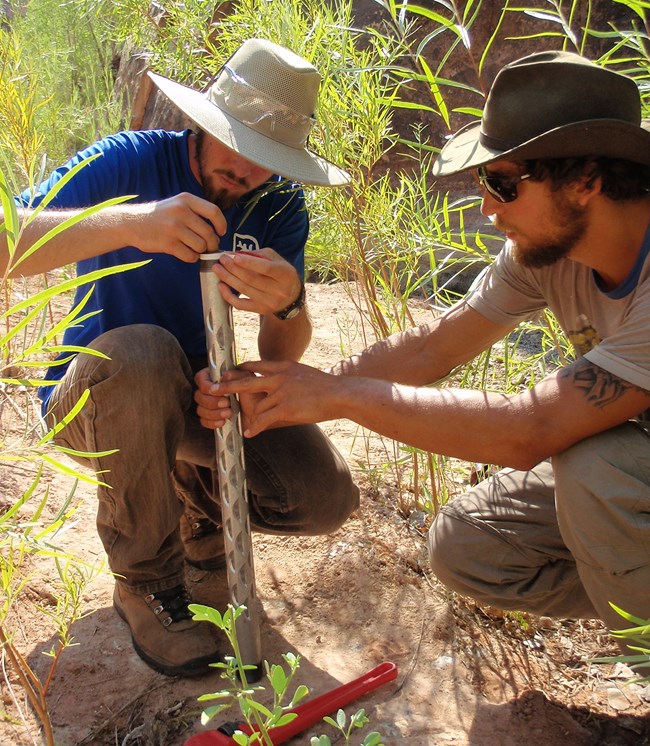
NPS/R. Weissinger
Riparian ecosystems are potentially sensitive indicators of landscape-level change because they are linked to both aquatic and upland systems, perform important ecological functions, and are biologically diverse. Riparian systems face a number of anthropogenic threats, including stream-flow damming or diversion, channel-stabilization structures, invasive exotic species, livestock grazing, timber harvesting, agricultural clearing, groundwater pumping, and trail creation. These disturbances can alter watershed conditions and directly or indirectly influence downstream riparian ecosystems. Developing credible, efficient monitoring approaches will help in assessing riparian system health and provide early warning of system degradation.
Riparian monitoring involves the collection of both biological and physical measures. The Northern Colorado Plateau Network (NCPN) monitors vegetation, hydrology, and geomorphology in wadeable streams with perennial (year-round), intermittent (surface flow during certain times of the year and a shallow water table in at least portions of the stream), or ephemeral (surface flow for relatively short periods in direct response to precipitation) flow regimes. Park staff select individual streams for monitoring based on management priorities. Repeat sampling of permanent transects allows us to track changes in the cover and species composition of riparian vegetation, including the relative abundance of native and nonnative species. Measures of physical drivers, including stream flow, alluvial groundwater dynamics, and changes in channel form, are used to assess whether observed changes are primarily the result of natural variability or anthropogenic stressors.
The Northern Colorado Plateau Network monitors wadeable streams at Arches National Park, Capitol Reef National Park, Natural Bridges National Monument, and Zion National Park.
Datasets for continuous stage (water-quantity) monitoring can be accessed and downloaded from the NPS Aquarius data portal.
Vital Signs: Riparian plant communities, surface water dynamics, groundwater dynamics, stream/wetland hydrologic function
Protocol Leads: Carolyn Livensperger, Rebecca Weissinger
Publications and Other Information
Quick Reads
Source: NPS DataStore Saved Search 2136. To search for additional information, visit the NPS DataStore.
Source: NPS DataStore Saved Search 479. To search for additional information, visit the NPS DataStore.
Source: NPS DataStore Collection 4214. To search for additional information, visit the NPS DataStore.
Last updated: June 17, 2025
